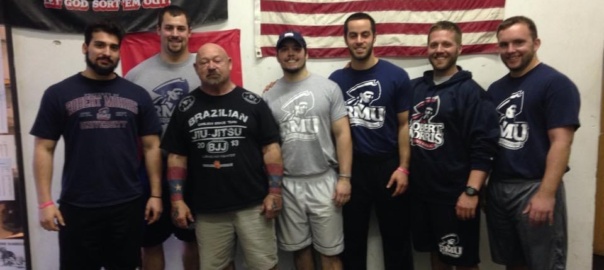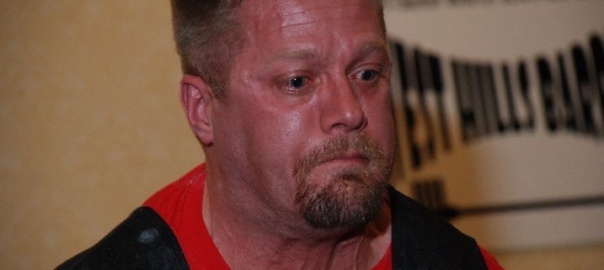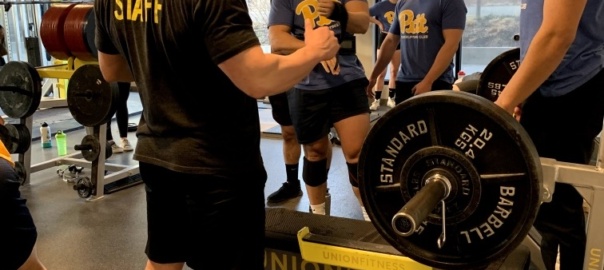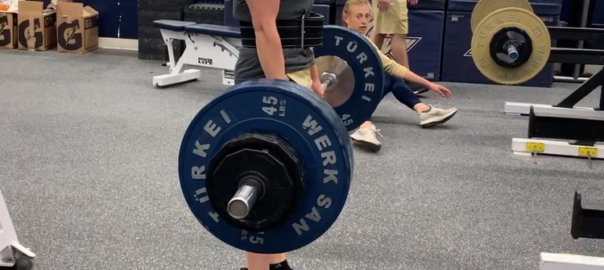Coming out of 2020 I was training with the Wizard himself, Charles E Jasper (we share the same middle name). I love training with CeJ as he brings a ton of intensity and dedication to each and every lift. Yet, I needed a change and it is hard to train with fellow employees at UF as both of us need the exact same time off to train. I decided to reach out to a good friend for programming. Ryan Nosak has been a good friend for a decade now and trains a ton of very successful athletes and non-athletes. Also, he trains at Quads gym with automatically gives him street cred.
Ryan knows me well enough to know my weaknesses and his philosophy (similar to mine), is attack your weaknesses. So without further ado here is what I am doing on week two with Ryno at the steering wheel and Ham pushing the car.
|
MONDAY |
TUESDAY |
WEDNESDAY |
THURSDAY |
SATURDAY |
|
| 1. Safety Bar Squat AMRAP @80%, 3 x 6-8 @70% | 1. BB Bench AMRAP @80%, 3 x 6-8 @70% | 1. Deadlift AMRAP @80%, 2 x 6-8 @70% | 1. Hamstring Curl 3 x 12-15 | 1A. Close Grip Bench 3 x 8-10 @65% | |
| 2. RDL 3-4 x 6-10 | 2. Seated BB OHP 3-4 x 6-8 | 2. Pull Ups 3-4 x 6-8 | 2. Leg Press 3 x 10-12 | 1B. Deadstop DB Row 3 x 10-12 | |
| 3. DB RFE Split Squat 3-4 x 8-10/leg | 3. Dips 2-3 x 8-10 | 3. Meadows Row 3-4 x 8-10 | 3. Hack Squat Machine 3 x 10-15 | 2A. Machine or DB Fly 3 x 10-15 | |
| 4. Seated Calf Raise 3 x 15-20 | 4. Side Lateral 3-4 x 8-12 | 4. BB Curl 3-4 x 8-10 | 4A. Leg Extension 2 x 15-20 | 2B. Cable or Machine Rear Delt Fly 3 x 15-20 | |
| 5. Abs 3-4 x 10-20 | 5. Skull Crusher 3-4 x 8-10 | 5. Abs 3 x 10-20 | 4B. DB Walking Lunge 2 x 10-15/leg | 3A. DB Shrug 3 x 15-20 | |
| 5. Standing Calf Raise 3 x 15-20 | 3B. DB, Machine or Cable Pullover 3 x 12-15 | ||||
| 4A. Preacher Curl 3 x 12-15 | |||||
| 4A. Cable Pressdown 3 x 12-15 |
This program is starting off much like a bodybuilding style program. Again, Ryan knows me and is attacking my weaknesses. I would be remiss if I didn’t add that in talking to Ryan about this what impressed me was the questions he asked. Here is a small sample of questions and info I gave him.
- How many days a week do I want to train? (4-5).
- How much time can I dedicate to training? (1-1.5 hours).
- What do I enjoy doing? (Long answer).
- Can I train on the weekends? (yes but prefer shorter days).
- I also added that on Friday mornings I ride my bike and my heart rate tends to be at or above 90% for 20-30 minutes so this is not an ideal day to train hard.
I was happy with Ryan’s questions because as an experienced coach myself I know the most simple questions often give the best information. I have found too many coaches who major in the minor and forget that how much time one has can profoundly affect an outcome. Also, what do you enjoy doing is an underrated query.
Please feel free to follow along with me and Ryan with this new journey and let’s see if I get better or just stay not too bad :-).
Have fun, train hard, and don’t take it too seriously.
Hamer





